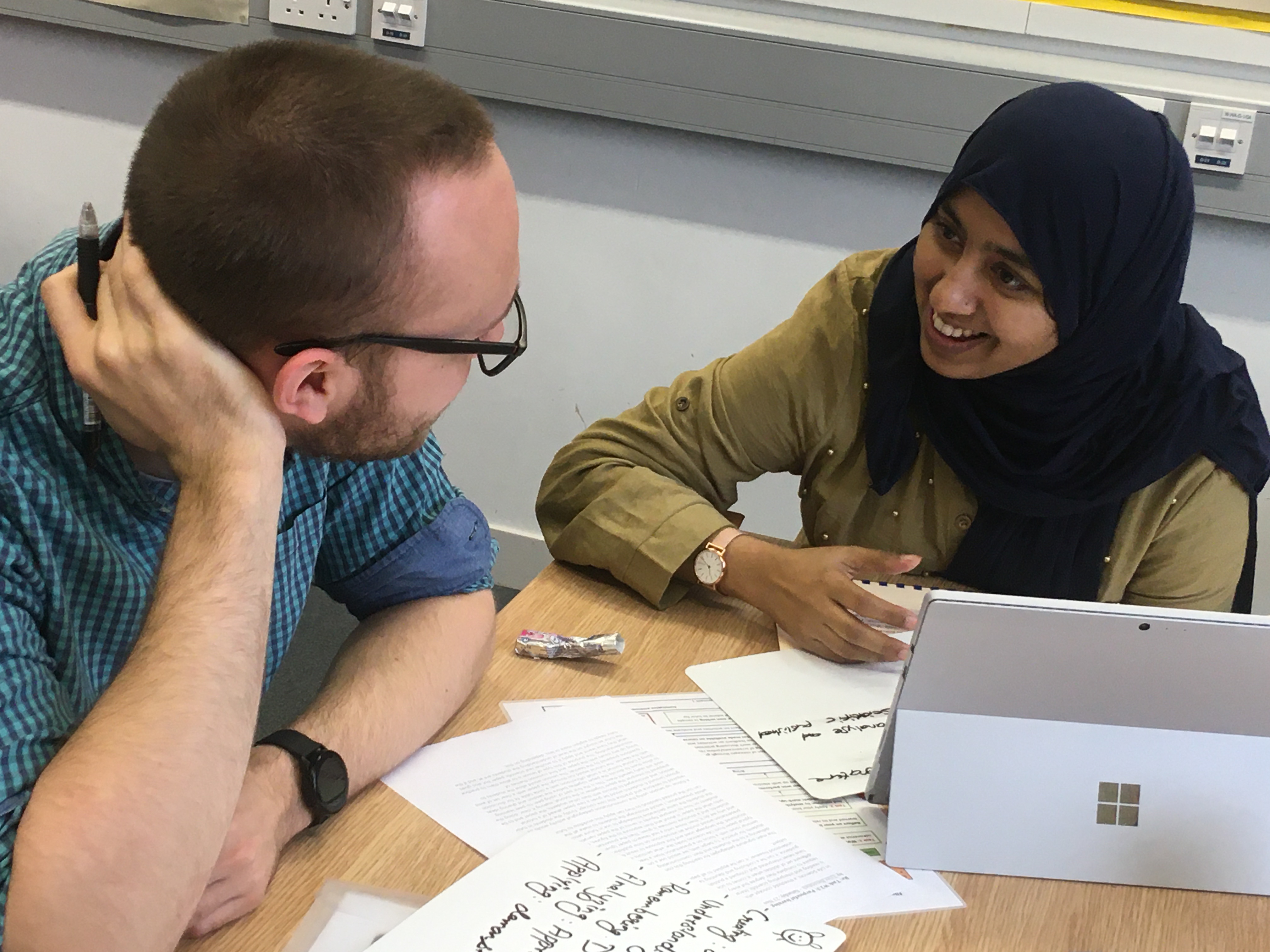Buddy and Peer Mentoring Scheme
Concept
The Warwick PGR Teaching Community Buddy and Peer Mentoring Scheme is a platform to easily connect Postgraduates who teach and are eager to engage in continuous development of their pedagogic practices.
Join, Connect, Discuss
Join the Buddy and Peer Mentoring Scheme through our MoodleLink opens in a new window. Go to the “Mentoring and Support” page and answer a few questions. This will help you and the other participants understand how and how much you intend to engage with the scheme.
Connect with other Participants according to your matching interests. Just send them a message via their preferred mean of communication (email or Moodle chat)
Discuss with your teaching buddies about your pedagogy, passion for teaching, tips and doubts or whatever you wish! Consider observing one another teaching: it’s an excellent way to gain awareness about one’s practice by both receiving and providing constructive feedback.
Reflect, Share, Inspire
Make the most of the scheme by reflecting about your discussions with your buddies and their impact on your teaching. Consider sharing your reflections and conversations in the Journal of PGR Pedagogic PracticeLink opens in a new window . Participate in the emerging scholarship on teaching practices of postgraduate students and inspire others.
Peer Observing
The Buddy and Peer Mentoring Moodle offers a handy platform to engage in peer observations. Being observed when teaching and observing others as they teach is an excellent way to gain awareness about our pedagogic practice. Being observed is a valuable chance to receive non-judgemental, constructive feedback on our pedagogy, which we may have developed informally through our experience as students and via trial and error (Martin and Double, 1998). As teachers, when we observe someone else teaching, especially in a similar discipline, we naturally identify with the situation and map the observed experience to our own, borrowing ideas, finding solutions to problem we were experiencing, and becoming aware of problems that we had so far considered as “the normal state of things” (Tenenberg, 2016).
Whilst teaching observations need not be formal, following an agreed plan and direction can increase the effectiveness of the exercise (Gosling, 2002, Grainger et al, 2016).
Martin and Double (1998) suggest a simple scheme in 3 steps. The first is the pre-observation meeting, in which the learning outcomes of the sessions should be laid out by the person being observed, any handout should be shared with the observer what both parties would like to gain from it should be clarified. The second step is the observation itself, during which the observer should take notes. It is important that the observer refrain from participating in the dialogue and be aware that their presence might have an impact on the person being observed and on the students. The third step is the feedback meeting, which should begin with the teacher sharing their view on the class they have taught, followed by a critical and evidence-based discussion. In all circumstances it is important to be frank and open, avoiding complacency and conservatism (Gosling, 2002). Future development targets should be set at this stage and the exercise should be reciprocal and, when possible, repeated more than once to achieve the best results.
A number of different Teaching observation forms are available from Warwick repositories, and may be adapted to the circumstances.
See, for example,
-
https://warwick.ac.uk/fac/sci/maths/undergrad/teaching/
mathematics_ug_support_peer_observations.pdf -
https://warwick.ac.uk/fac/sci/med/staffintranet/facultydevelopment/peerobservation
Tenenberg, J., 2016. Learning through observing peers in practice. Studies in Higher Education 41(4), 756-773.
Martin, G.A., Double, J.M., 1998. Developing higher education teaching skills through peer observation and collaborative reflection. Innovation in Education and Training International, 35(2), 161-170.
Get Involved!

Teaching is not only a rewarding experience which is good for your CV - it's a great chance to meet like-minded people from across the university!
